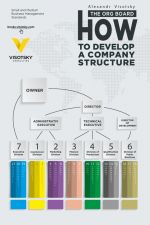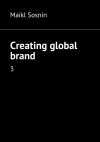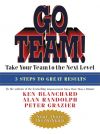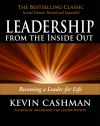Правообладателям!
Представленный фрагмент книги размещен по согласованию с распространителем легального контента ООО "ЛитРес" (не более 20% исходного текста). Если вы считаете, что размещение материала нарушает ваши или чьи-либо права, то сообщите нам об этом.Читателям!
Оплатили, но не знаете что делать дальше?
Текст бизнес-книги "The org board. How to develop a company structure"
Автор книги: Александр Высоцкий
Раздел: Управление и подбор персонала, Бизнес-книги
Возрастные ограничения: +12
Текущая страница: 1 (всего у книги 3 страниц)
Александр Высоцкий
The org board. How to develop a company structure
Introduction
This book was written for the executives and owners of small to medium sized companies that are expanding, as well as anyone who makes decisions regarding the company’s structure and improvements to facilitate business growth and development. It is for those who love what they do and dream of creating a well-organized business.
When I was creating my first business, I was going through one textbook after another on the subject of management in an attempt to find the answer to this question: what is the optimum structure for my company? Without any exaggeration, I spent lots of hours researching but, in the end, was disappointed. In management textbooks I found only very general recommendations, most of which did not go beyond classifying types: the company structure can be of this type, or it can be of that type… I did not find any specific concepts regarding which structure I should choose and what criteria I should use to make that choice. Also, while reading these books, I got the impression that they are written as if one wanted to manage some global corporation from aboard a spacecraft. It was impossible to understand how to apply all these clever ideas to actual operations in a relatively small manufacturing, trading or service company.
I also knew that I would not be able to build a well-managed company if I, the founder and the CEO, didn’t have an initial "blueprint", basically – no idea of the necessary divisions and levels of employee responsibility. At that time, my manufacturing company was not very big. It had about 150 full-time employees and several independent contractors. My technical education, logic, and experience told me that without a sound organizational structure I would not be able to properly organize and expand the work, just as it would be impossible to build a beautiful building by attaching additional floors, attics, balconies, and garages to a small house. Only with a comprehensive initial plan of the entire building could it be built floor by floor.
As it turned out, this problem had a beautiful and logical solution. It is possible to develop a structure that will provide a solid foundation for organizational expansion and development, while will not changing significantly in the process of growth. As I write this, seven years of consulting and working experience with more than two hundred companies of various specializations confirm that this is not just an elegant theory. It is a real opportunity to create an optimum structure of the company, regardless of its size and stage of business development.
This book is dedicated to one of the fundamental principles of organizing work, which you will use to overcome management difficulties. Regardless the size of your company, while reading this book you will see the great potential of your business as well as the issues which limit its growth and development. You may think you already know this, but I'll take it upon myself to say that you are mistaken. If you already knew precisely the true potential of your company, and understood its weakest link – you would have already taken care of it.
I often hear from business owners that their weak spot is sales, but experience shows otherwise. Cursory research shows that sales departments function quite well, while instead management is completely oblivious to lack of advertising, or that their products are not competitive. Regardless of whether you agree or not, I promise that you will see your business in a completely new light and gain many new ideas for its expansion.
If you look around, you will find many companies in many different lines of business that have great products, but the scale of their activities has not grown for years. Why do some companies expand rapidly and within ten years go international, while others, despite their outstanding product, settle for a very small share of the market and remain at almost the same level? You will find the answer to this question in my book.
Perhaps, you will thumb through this book and see some data that seems redundant or too complex. However, if you read it consistently and carefully, you will see that these concepts are simple and useful, even for small companies. Their implementation will bring any sized business significant expansion.
After all, your personal point of view on your business fully determines its future. My recommendation is that you read this book in its entirety, and then refer to individual chapters and inserts to gain a greater understanding of specific divisions.
Management is one of the most ancient human endeavors. It can remain simple if you don’t introduce arbitrary complexities. Its basics have remained virtually unchanged since the times when the head of the tribe led his tribesmen out of the caves to hunt mammoths. Of course, modern technology (computers, the Internet, advanced means of communication, etc) gave us an opportunity to eliminate errors from daily tasks, but the basics of managing a group remain the same.
These basics will give you the knowledge to better understand how you can organize a group of people and their work. An adventure is awaiting you. After reading this book you will see your own business and any other company in a different light.
Chapter 1
Stages of development and crises of the small business
A company goes through several stages in its development; it all starts with the bright idea that answers how you can provide something of value to a certain category of customers.
We can say that this is the research and development phase of a product and its reproduction. In some business fields areas, such a technology already exists or can be acquired; while with others you have to invent or create something new.
At this stage, the company’s founder is often deeply involved with the daily activities of the company and product development. He personally organizes production or arranges delivery of goods. He thoroughly explores and implements the vision of a restaurant, or develops the services for the company. If this stage is successful, it’ll result with the first batch of satisfied customers, and your team gains the confidence that your idea translates to a business. This stage one understands the product’s actual cost, prices are developed and connections are created to get the necessary resources. The product undergoes some improvements or even a complete makeover, and you gain an insight, confirmed by experience, into your customers and distribution channels. At this stage, the company executives are not quite interested in making management as effective as it could be – all the attention is focused on product creation and bolstering a viable company.
We call this the Manual Stage, where the business founder, holding the vision and being competent, manages a small team quite well. He knows the technology for producing the product, as well as what his employees need to achieve in order to get results. As the company engages in small-scale activity, there aren’t executives and management issues do not come up. Regardless, the business is still gradually approaching the First Management Crisis. When the company hits the crisis depends on how fast the company is growing.
Once the idea proves successful and you have to turn it into a real business, then we move to the next stage. The owner begins to understand that to further expand, he needs to shift from directly managing individual employees to managing parts of the company – he needs to create a second level of managers. Whether the business owner promotes his best employees to managers or tries to hire experienced ones, the First Management Crisis deals the inevitable blow. After managers or executives are hired and established, overall efficiency usually drops.
CEOs of smaller companies come to a seemingly logical conclusion that the drop is due to the incompetence of his new hires or their unwillingness to work. Have you ever heard executives complain about employees who don't want to work? Yet, these same employees had previously produced good results under direct management – and suddenly everything changed.
The real reason is not that people transform overnight, but that the leader– usually, the owner of the company – is only good at directly managing rank and file employees and not his new level of executives. The owner knows the production technology and competently directly guides employees to the desired results. The owner is just not able to effectively manage the executives who must now manage the other employees. It's one thing to fly a plane, which in itself is not an easy task and requires special skills, but it’s a completely different job to lead a team of pilots. A pilot has to competently handle the machine, an executive needs to competently handle people. Additionally, they use completely different bodies of knowledge and tools.
This is the main reason why small and profitable companies, even those with great products, rarely expand beyond a certain point. They weren’t able to overcome the First Management Crisis and grow out of their small business "pants". Thousands of examples illustrate the First Management Crisis. One of the most famous is the incredibly successful small family restaurant owned by brothers Dick and Mac McDonald. It was well known locally and produced a steady income for its owners. The brothers made numerous attempts to create a network of fast food restaurants, but it wasn’t until Ray Kroc[1]1
Ray Kroc: Raymond Albert «Ray» Kroc (October 5, 1902 – January 14, 1984), an American entrepreneur, restaurateur and owner of McDonald's corporation. He was included by Time magazine in the «100 most important people of the century» list. He amassed a fortune valued at $500 million at the time of his death.
[Закрыть] took on the business development that McDonald’s was born.
A lesser known, but no less illustrative example is that of the famous Brooklyn pizzeria Di Fara Pizza who has had the same owner and chef, Domenico DeMarco[2]2
Domenico DeMarco: the founder and chef at Di Fara Pizza, a pizzeria in Brooklyn, a borough of New York City. The facility opened in 1964. The New York Times called the restaurant: «one of the most acclaimed and sought-after pizza shops in New York City». This pizzeria is known for its great tasting pizza, noted by New York magazine, online publication Serious Eats, Zagat rating company, and Frommer's travel guides.
[Закрыть], since 1964.
Experts have repeatedly honored DeMarco’s pizza with the highest awards. Yet, despite the outstanding taste and a long line of people outside the restaurant, the facility has not expanded since its opening. Of course, this situation greatly depends on the goals of the business founder. In this example the owner simply doesn’t desire to expand his business. His passion lies in the craft and it seems that he simply likes making pizza without any further ambitions. To get to the next stage of business development, one needs to have the ambition to grow and have big goals. Then there is a chance to overcome this crisis. In my book, The Business Owner Defined, I described, in detail, the objectives of a business. However, to become successful, it is not enough to just have goals for the company executives. There has to be tools, such as a company structure, a system to measure results, financial policies, etc.
A business falls into the First Management Crisis after appointing executives without any management tools. These executives expect the owner to utilize the same hands-on control, but in a more difficult condition as the company has grown. Additionally, the owner now tries to manage "manually" at a new level, which is usually unsuccessful, and so the chaos grows. In order to overcome the crisis, the founder of the company must master the tools for managing people, train strong leaders, and learn to manage effectively.
Once the first crisis is handled, the company will continue to grow and that may continue for many years. But interestingly enough, sooner or later the founder of the company will feel the need to switch out managing the daily operations for carrying out strategic management while remaining the goal setter.
To win a large-scale battle, one needs to be on an elevated plane where they can view the whole battlefield and the surrounding area. Therefore, can properly plan one’s own actions and anticipate the actions of the enemy. It is impossible to intelligently manage a large-scale activity being in the thick of things at the forefront. The second management crisis has to do with the inevitable need to take on the functions of a strategist to direct the activities of a well-organized company. The owner must go from operational management to strategic.
Often it is the desire to move away from daily operations (the front of the battle) that encourages owners to implement management tools. However, one needs to realize that simply adding an organizing board and other tools will not facilitate the switch on their own; they will only create the necessary foundation. After you implement the management tools, you need to cultivate competent executives, and only then can you delegate the management of operations. If you go about this with an intelligent plan, you could implement management tools in a small business in six months to a year, and cultivate your executives within a year. This is a big job. You will have to invest as much time and effort as you would in establishing your technological processes. But the game is worth your while – the company will not only become well-managed, it will also gain a significant advantage over its competition.
Chapter 2
Valuable final product
The Valuable Final Product (abbreviated to VFP) is one of the key management concepts defined by L. Ron Hubbard in his articles. You see this all the time – your employees perform lots of actions, but not all of them are actually directed towards results. Or you see how someone is always preparing to do a job: he arranges his papers, organizes the computer files, he invents clever ways to organize his desk tools, etc. Another employee is running around crazed and completing one thing after the other. He may look busy, but he’s still not producing the results you expected. Why is this happening? Why do we have those who produce results and those who are busy with «doingness»?
In the dictionary, we can find the following definition for product, "an artifact that has been created by someone or some process" where artifact is “a man-made object taken as a whole”. An accountant prepares a report and sends it to the IRS, that is definitely a product. When a barista puts the final touches on a cup of coffee and hands it to the customer – that is also a product. When the owner of a company develops a strategy, by spending his time and energy on it, and describes it in a document that can then be studied by his executives – the strategy here is a product.
Note that the word object means “a tangible and visible entity”, where tangible means that it can be perceived by the senses as something that exists. Therefore, somebody’s brilliant plan that is not shared with anyone is not a product because other people cannot perceive it, unless they are able to read the person’s mind. For that plan to become a product, it has to be at least shared with someone, and then it will become a product. The product is always tangible, even when it comes to such "intangible" things as designs, plans, and ideas. They need to be described on paper or introduced during presentations – otherwise they are not products. A motivational meeting that inspires employees to succeed is a great product for an executive, as the change in employee attitude is quite tangible – you can see and feel it. But the product that is not noticeable to others, by definition, cannot be a product. If the, "I was trying”, “I attempted to”, “I was getting ready to”, etc don’t result into something that can be perceived by the senses, it’s not a product.
Everybody has many products in their various areas of their life. Even an employee who sharpened their pencil would have a product, as you can definitely perceive it with the senses and it is a result of work.
Work, by definition, is a conscious activity with a certain purpose. For example, a sales manager wanted to close his client on a deal for equipment supply, but instead spent his time educating the client in some technical issues. If his goal was to sell, then he was directing his efforts towards one result, but achieved a different one. Therefore, educating the customer was not a product, unless, of course, he had planned to engage in such educational activities.
If an executive created a pay system designed to improve productivity, but resulted in employee dissatisfaction and loss of personnel, then this system is not a product as it doesn’t align with the set goals. The HR manager hires an employee who stays in the company for a week and then runs away – this new employee is not a product as it deviated from the goal of hiring a new person. On the other hand, hiring an employee that improves the company's production, would be a product.
Any product must be completed to be considered a product. A salesman, whose goal is to close the deal, attracts a customer who demands discounts and special treatment, so that the executive winds up personally closing the sale, didn’t get a product. If the company’s goal setter conceives a brilliant plan, but does not describe it in sufficient enough detail so that it can be given to his executives to work on – this is not a final product. If the person assigned to the product doesn’t complete it in such a way that it can be used, someone will have to “finalize” it, which creates additional work for others.
Usually, having to “finalize” a product results in a lot of unnecessary and additional actions, and devours the production time of employees. If you examine some employee’s actions, you will see that most of their time is spent either completing other people's products or correcting the consequences of such incompleteness. For example, you ask an employee to pay a contractor for his work. Your Accounting Department starts working on it, but a week later the contractor is calling you, upset by the fact that he did not get paid. Now, you’re taking the time to handle the contractor, re-issuing the order, and convincing the contractor to continue doing business with you despite the agreement violation. The contractor may cease doing business with your company, and you’ll have to find a new one. All the while, spend time restoring your reputation in the community. You’ve wasted a lot of production time because of one very simple, but incomplete product of the Accounting Department. Why did the Account Department slack in this task? The accountant simply does not understand what his "final product" is.
I don’t know if you are aware of the scope of this issue, but it is huge. In an article on management[3]3
L. Ron Hubbard’s article Product-Org Officer System, Name Your Product, written on August 7, 1976.
[Закрыть], I came across the idea that a person who doesn’t understand his product, would not be able to produce it. As a practical man, I decided to check how well my executives understand their final products. I simply asked each of them, «What do you think is the primary result or product of your position?» The answers I got from interviewing a dozen of my executives were rather shocking. They were naming lots of things as their product, but not at all the product that I expected from them. When one of the executives told me, "My product is to have my manager help me,” I quit surveying. After that I made a decision – I am not going to ask any more questions, instead I will name the exact product for each of my subordinates and make sure that they fully understand it. And don’t get the idea, by the way, that I got that answer from a totally useless executive or that the company was no good. The company was an industry leader and that executive was quite a good worker. The answer was so absurd, that it wouldn’t have even occurred to me! If you have a strong stomach, try surveying your employees or co-workers. This will be an adventure! Ask them what they consider their main product to be and you will start understanding them better.
Another very important factor is how valuable is the product that a person produces. Value is the degree of importance, which can be often, but not always, expressed in monetary value. A glass of water, for example, will take on a completely different value to you depending on whether you are in the hot desert or sitting in a cool office. The value is not determined by the amount of labor or materials that went into it, but rather by the desire – meaning, how badly others want to get this product and what they are willing to give in exchange. On a hot summer day the value of an ice cream cone is high while during a cold winter, it is low. And here's something important about this concept: you don’t always view something useful as having a real value. For example, every man’s future depends to a great extent on the kindergarten and school teachers they had when they were growing up. But the paradox is that in this society, it is not customary to pay a lot of money for the products of teachers…
This is a very old and odd tradition, but it is nonetheless true. At the same time, people are willing to pay a considerable amount of money for the advice of a lawyer or stockbroker. Hard to believe? Take a look at how much people spend on designer clothes and beautiful cars, and how much they spend on education and upbringing of their children. How much effort and money they spend to kill themselves in various ways, and how much to promote their health. I'm not talking now about a special medical treatment when they are willing to give all they have, but about keeping a healthy lifestyle. I’m not trying to give you a hard time, but just so you understand that the value of a product is not always logical, it depends on opinions of others. For a product to be called "valuable" other people have to want it and it needs to be valuable to them. Our civilization is neither perfectly fair nor balanced – there are some odd values and you should be aware of that. Apparently, the ability to understand, and especially to predict, what would be valuable to people is one of the greatest components of an entrepreneur.
When we talk about the value of an employee’s product, we mean the degree in which what he produces is needed by the company. If the company wants HR to hire effective employees, then the value isn’t how many people and how quickly HR fills the vacancies. Ultimately, it is how successful and productive the new hires are. If a leader creates inspiring goals and directs the team members towards these goals, this is valuable to each member of the group. This is why people will follow leaders, join their goals, and are willing to provide their own creativity and efforts in exchange for that value.
Each life role or job position has a certain Valuable Final Products (VFP). For example, the VFP of a salesperson is signed and paid contracts; the VFP of an HR manager is productive employees who are established on their jobs; the VFP of a CEO is an expanding and thriving company that produces a valuable product for its clients. The VFPs of a husband is a family that is safe, secure, and provided for financially. The conscious production of a product starts when a person understands exactly what their valuable final product is. If the person lacks that understanding, they will produce something that he personally considers valuable, or he will follow personal inclinations. When we carry out our consulting projects, we ask our business owners to conduct a survey with their key employees and managers to ask them what they consider their product to be. When the survey results are in, the executives clutch their heads in despair. The odd employee ideas that the survey reveals can be rather astounding. If you do the surveys, you will find out that no more than 10 % of the company's employees can accurately name their VFP. This is bad. If they can't properly identify it, they cannot focus their efforts on producing it. To compensate for it, you’ll give out individual orders and constantly direct the employee to produce his VFP. That is inefficient. The upside is that the productivity of employees can be significantly improved once you give them an accurate understanding of their VFP. This principle is also applicable outside of business; many couples could improve their marriage if they simply worked out with their partner the exact VFP they expect from each other.
An accountant who doesn’t understand that one of their most important VFPs is securing the value of company’s assets (money, property, materials and goods), will keep asset records as a formality and you will not be able to keep track of the actual condition of your assets. If a lawyer does not understand that his VFP is legal security of the company, he will not take the initiative to check over every agreement, to ensure that the company has sound employment contracts, and financial liability agreements for its employees. Instead, he will simply draft and check over the contracts that come his way, while legal security will be rest upon the shoulders of those who “stick their nose” into everyone’s business, i.e. the top executives.
«A Valuable Final Product something that can be exchanged with other activities in return for support. The support usually adds up to food, clothing, shelter, money, tolerance and cooperation (goodwill)». [4]4
L. Ron Hubbard's article Valuable Final Products, written on March 25, 1971.
[Закрыть]
Give your employees a clear understanding of the VFP you expect from them and they will either greatly enhance their performance or refuse to do the work. Don't be surprised if you get a letter of resignation from an employee after you’ve defined his VPF. Perhaps, he never intended to produce this particular product, and the executive’s expectations were in vain. This rarely happens, as most people like working with awareness, purpose, and want to produce something truly valuable. Perhaps not everybody will like this, but what does that matter? There are lots of successful people who could work in your company.
When formulating a VFP, note that it should be: actual results of completed work, an item (perceived by the senses), should always be fully complete, and, above all, valuable to the company. The last thing to remember, before giving a person their VFP, is you must have a clear understanding of what exactly you want to get from him.
Try to formulate the VFPs for various employees that work near you and then watch what they are actually working on. For many of the posts, you will easily name their product but for some could be unclear. If you’re finding it difficult to formulate these VFPs, I can assure you that your employees are even less clear on what should their work results. It’s not at all surprising that most HR managers believe that their product is "hired employees", while executives expect them to provide "productive employees". While advertising specialists believe their product is creating a "memorable advertisement" rather than, "people who walk into the store as a result of the advertisement".
A VFP is applied to a particular position, but can also be applied to projects, a task or an order. It’s quite appropriate to accurately define the VFP of a task you assign. Defining a VFP will result in less “almost dones” from your employees. Good production in any field starts with a clear understanding of the result that needs to be obtained.
Правообладателям!
Представленный фрагмент книги размещен по согласованию с распространителем легального контента ООО "ЛитРес" (не более 20% исходного текста). Если вы считаете, что размещение материала нарушает ваши или чьи-либо права, то сообщите нам об этом.Читателям!
Оплатили, но не знаете что делать дальше?







